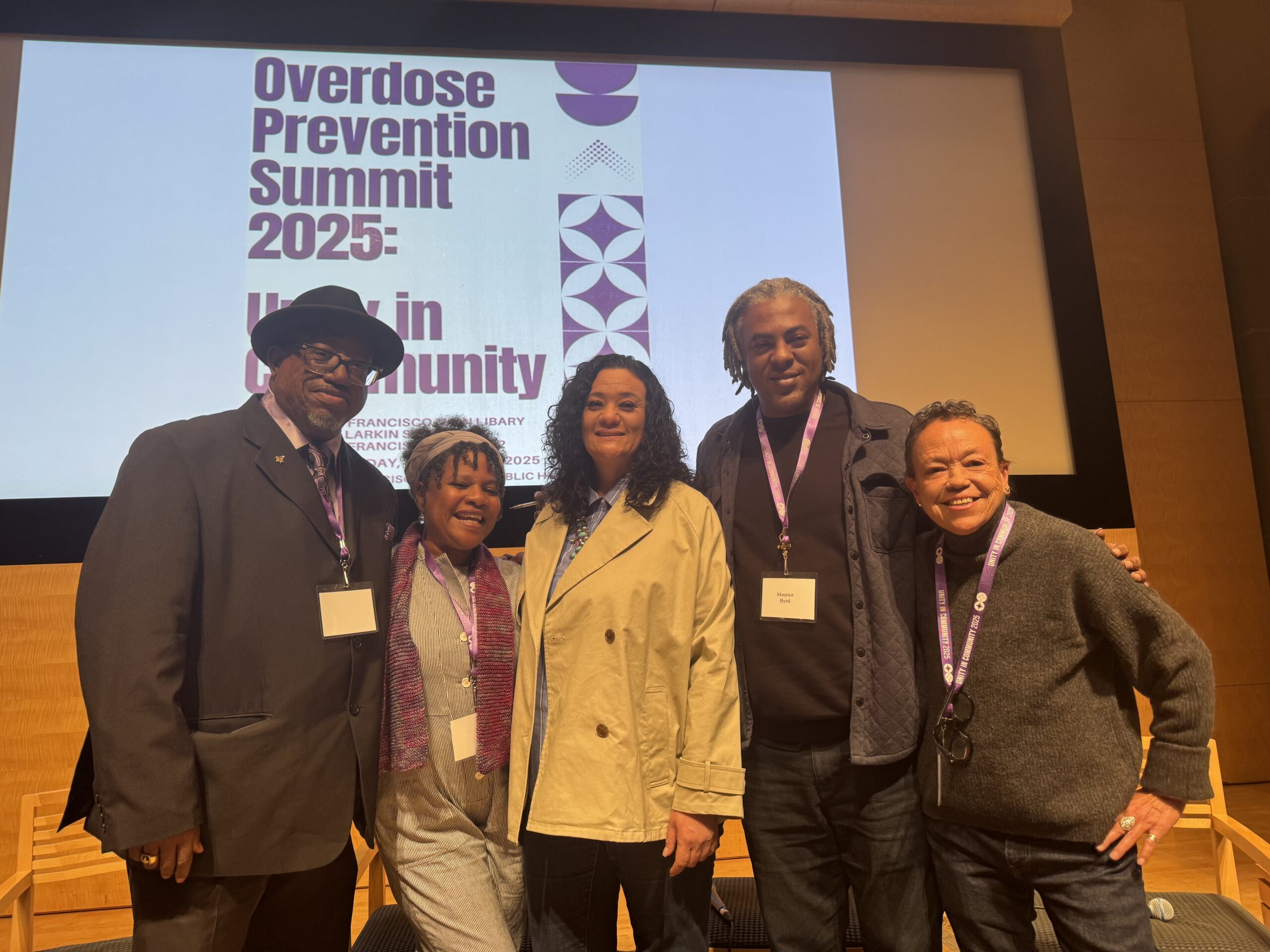Anna Berg, LCSW
Clinical Program Director
It was raining steadily as I turned the corner off Harrison Street and onto Merlin, the small alley where HRTC’s main offices are located in San Francisco’s South of Market Neighborhood. Belongings were strewn about the street, bedding and clothing scattered and soaked; it looked as if we had experienced a tornado and not just wet weather. I knew that the unhoused people likely staying here over the weekend had been “relocated,” they and their belongings “cleared,” the temporary encampment “resolved.”
As I walked the short bit of sidewalk to HRTC’s front door, I noticed a cardboard box move. It was one of our clients (I’ll call her Julia here), unhoused for more than ten years, someone who has experienced more trauma and loss in her 30 years on this planet than most people can imagine. She looked up at me and said, “You know, it’s not just that they want us to disappear. They want to erase us.”
I often struggle to convey the importance and clinical relevance of Julia’s comment to people unfamiliar (but perhaps impacted by or interested) in how to help people visibly suffering on the street. Finding effective ways to address (or circumvent) the inherent privilege of the question is one thing, and then how to share what the crushing weight of unaddressed trauma can do to the human psyche? How to share that helping someone consider making changes to their substance use means listening and understanding their use in the context of all their life experiences? And that incarceration is a risk factor for increased overdose and is not treatment? How to bring people into the knowledge that anyone can help someone suffering with a hello or gentle word, by offering a moment of shared humanity?
When the team opened our building for services, a clinician went outside and invited Julia in, assisted her in getting warm, ensured she had her documents and medications, and listened as she briefly shared her weekend experiences which involved experiencing physical withdrawal from fentanyl. The clinician offered support, reviewed options for stabilization and offered to reconnect her with her primary care provider, with whom she had been having difficulty staying connected to due to frequent forced moves on the street. Julia found me later that morning and said, “You all here see us. It’s hard to believe it’s even worth trying to do anything different when I know I’ll just get yelled at or treated like garbage, but you all don’t do that and that means something. Makes me feel sometimes like I could be worth something.”
Our team of dedicated, skilled clinicians shows up for people like Julia everyday. Reminding each person of their dignity and worth is the heartbeat of harm reduction psychotherapy because before people can make changes (to their substance use, housing status or anything else) they must feel empowered enough to take change on. When HRTC clinicians greet people, remember names, offer opportunities for genuine connection and treatment choices, we not only expand feelings of self-worth and self-efficacy, but begin our paced, integrated clinical assessment of what may benefit someone most in treatment. Creating inviting treatment environments and welcoming people into a treatment relationship, regardless of their goals, creates belonging, empowerment and hope. It is this foundational work that allows lasting behavior change to take root. This is the practice of harm reduction psychotherapy and the work of HRTC.
Read the rest of our newsletter HERE
Find out about our volunteer events HERE
Donate to our drop-in HERE

